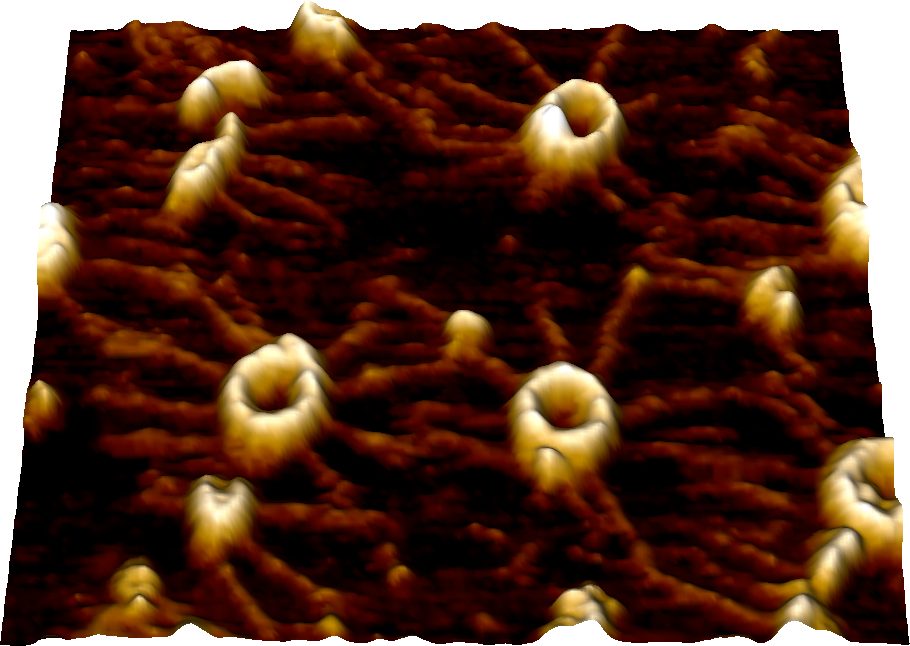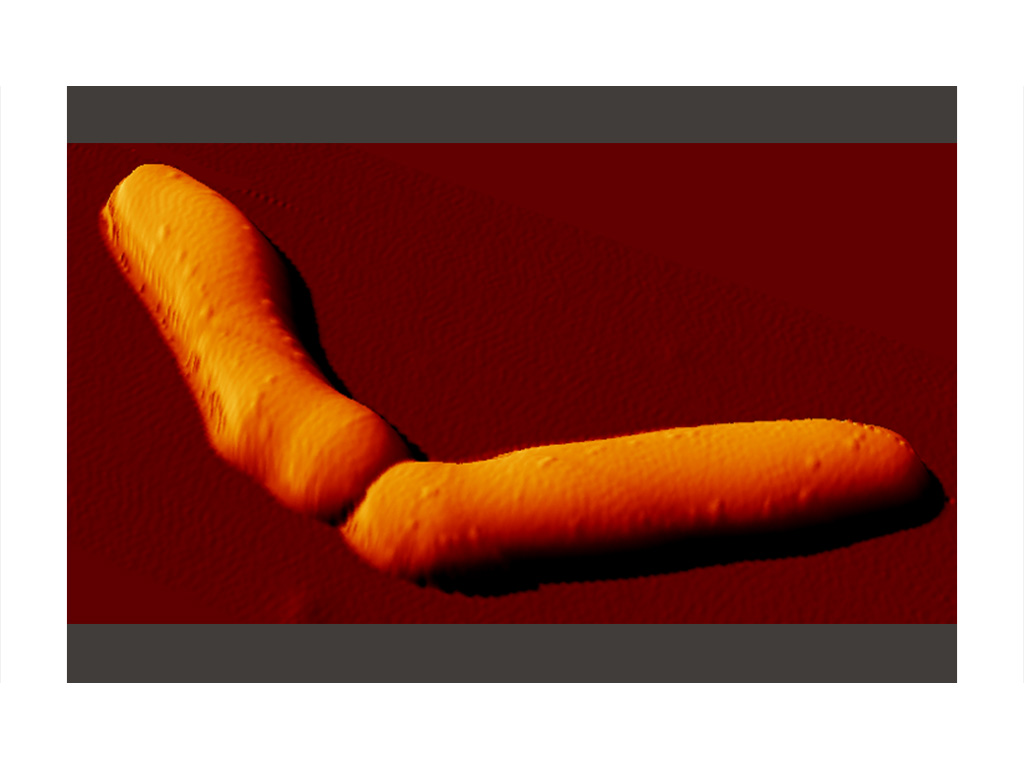At its core level, biology is a nanoscale science. The AFM can be used in fluid and is thus one of the most powerful tools available for directly studying biology at the nanoscale. In addition, it is a contact technique and can thus give important information about a sample’s mechanical properties. For example, we used the tool to discover that bacterial cell division is controlled by both enzymatic activity and mechanical forces.

Many biological structures are assembled and disassembled in a dynamic fashion to fulfil their function. To understand the biogenesis of macromolecular structures, it is essential to observe such kinetics in real time with single-molecule resolution. Using our homo-build HS-AFM, we study the assembly and dynamics of single proteins: SAS-6 proteins, membrane attack complex (MAC) oligomerize…
